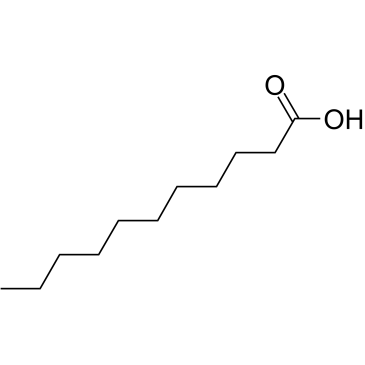Bestowing antifungal and antibacterial activities by lipophilic acid conjugation to D,L-amino acid-containing antimicrobial peptides: a plausible mode of action.
Dorit Avrahami, Yechiel Shai
Index: Biochemistry 42(50) , 14946-56, (2003)
Full Text: HTML
Abstract
The dramatically increased frequency of opportunistic fungal infections has prompted research to diversify the arsenal of antifungal agents. Antimicrobial peptides constitute a promising family for future antibiotics with a new mode of action. However, only a few are effective against fungal pathogens because of their ability to self-assemble. Recently, we showed that the conjugation of fatty acids to the potent antibacterial peptide magainin endowed it with antifungal activity concomitant with an increase in its oligomeric state in solution. To investigate whether a high potency of the parental peptide is prerequisite for antifungal activity, we conjugated undecanoic acid (UA) and palmitic acid (PA) to inactive diastereomers of magainin containing four d-amino acids ([D]-4-magainin), as well as to a weakly active diastereomeric lytic peptide containing Lys and Leu ([D]-K(5)L(7)). All lipopeptides gained potent activity toward Cryptococcus neoformans. Most importantly, [D]-K(5)L(7)-UA was highly potent against all microorganisms tested, including bacteria, yeast, and opportunistic fungi. All lipopeptides increased the permeability of Escherichia coli spheroplasts and intact C. neoformans, as well as their corresponding membranes, phosphatidylethanol (PE)/phosphatidylglycerol (PG) and phosphatidylcholine (PC)/PE/phosphatidylinositol (PI)/ergosterol, respectively. The extent of membrane-permeating activity correlated with their biological function, suggesting that the plasma membrane was one of their major targets. Circular dichroism (CD) and attenuated total reflectance Fourier transform infrared (ATR-FTIR) spectroscopy revealed that their mode of oligomerization in solution, structure, and organization in membranes have important roles regarding their antibacterial and antifungal activities. Together with the advantage of using diastereomers versus all l-amino acid peptides, this study paves the way to the design of a new group of potent antifungal peptides urgently needed to combat opportunistic fungal infection.
Related Compounds
| Structure | Name/CAS No. | Molecular Formula | Articles |
|---|---|---|---|
 |
Undecanoic acid
CAS:112-37-8 |
C11H22O2 |
|
Use of multivariate statistical techniques to optimize the s...
2015-03-01 [Talanta 134 , 256-63, (2015)] |
|
Direct Derivatization vs Aqueous Extraction Methods of Fecal...
2015-07-01 [Lipids 50 , 681-9, (2015)] |
|
An efficient and economical MTT assay for determining the an...
2010-07-23 [J. Nat. Prod. 73 , 1193-5, (2010)] |
|
Chemical Modification of Graphene Oxide through Diazonium Ch...
2015-08-24 [Chemistry 21 , 12465-74, (2015)] |
|
Comparison of different protein immobilization methods on qu...
2001-12-15 [Anal. Biochem. 299(2) , 130-5, (2001)] |